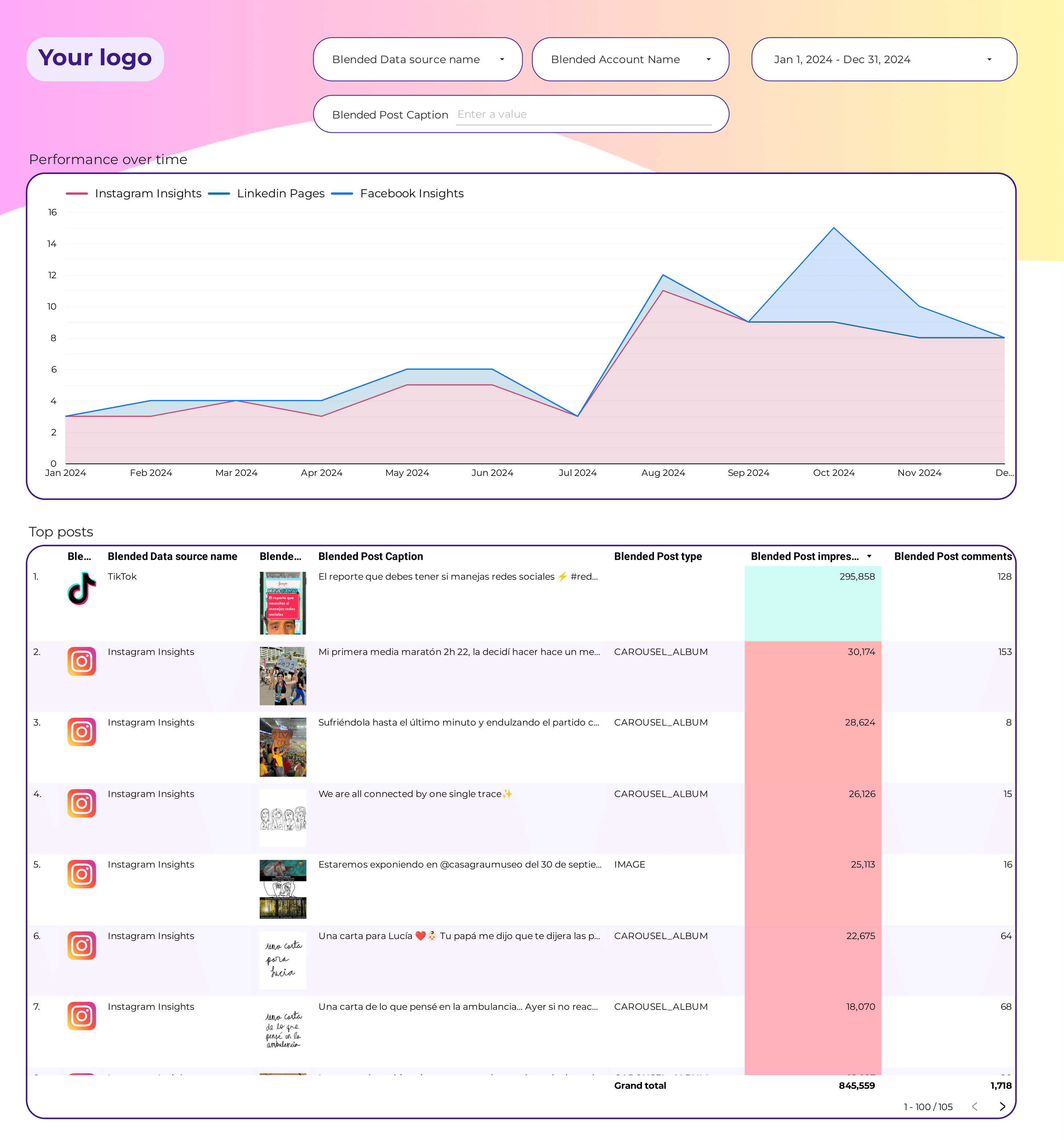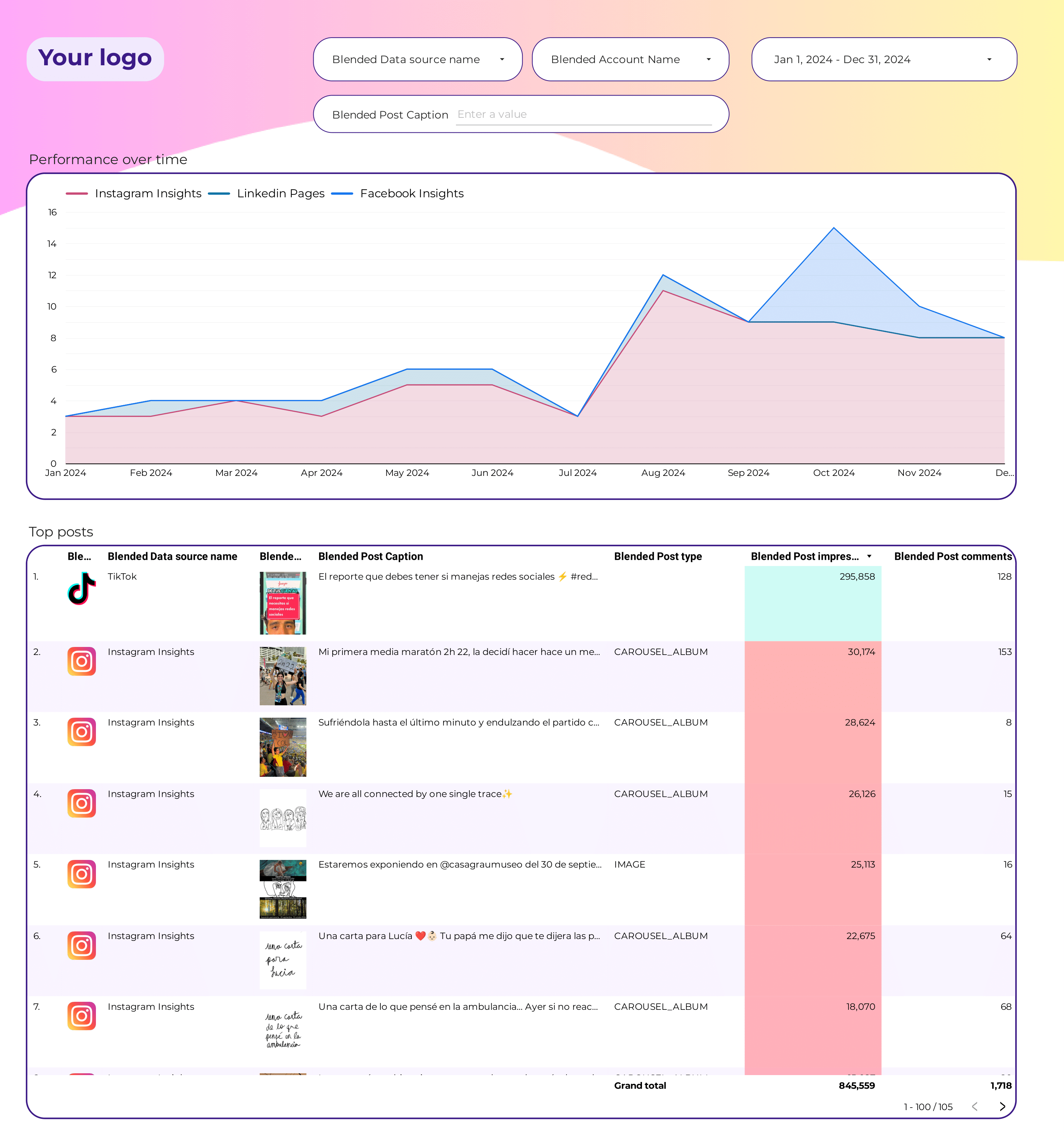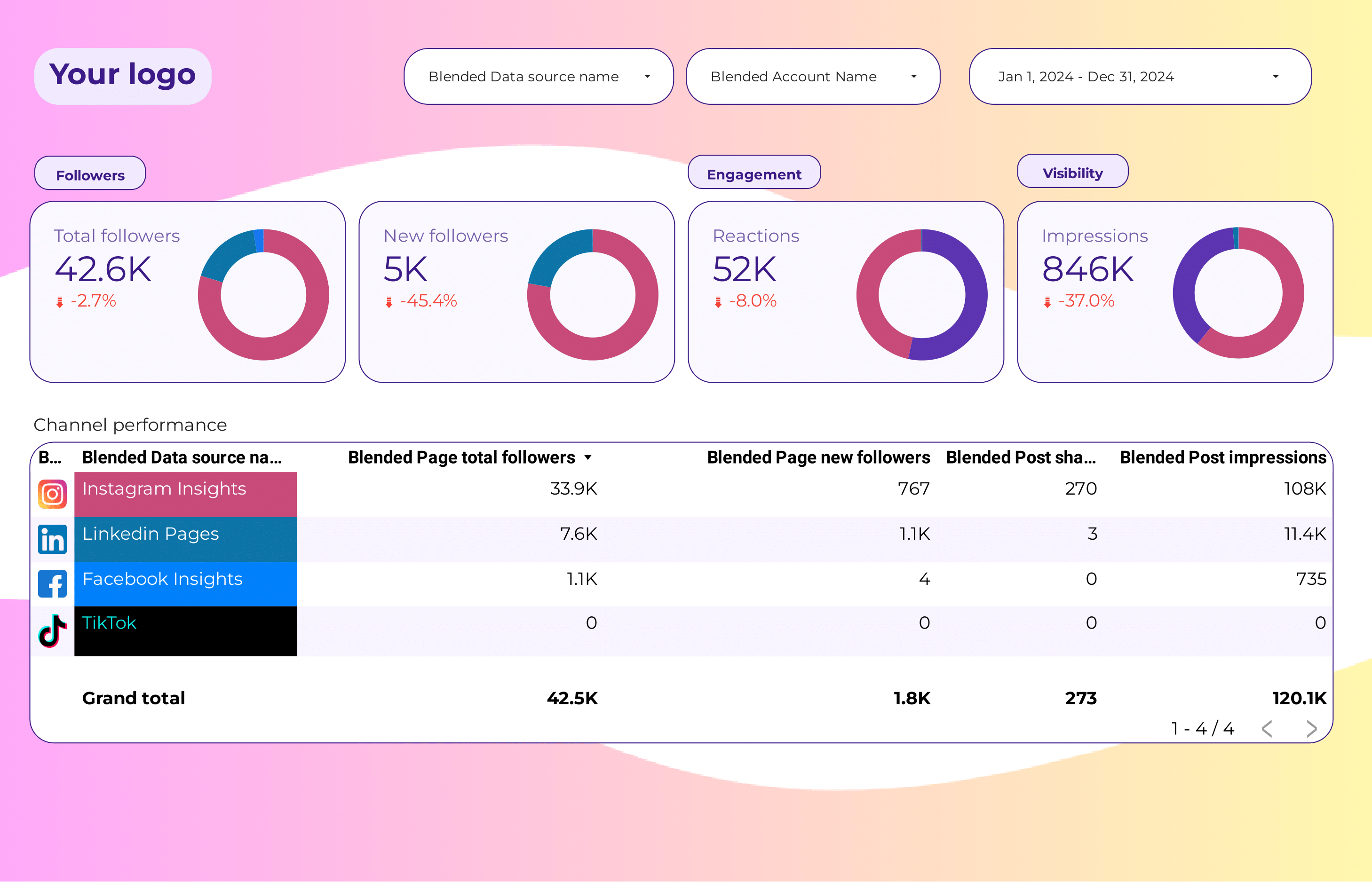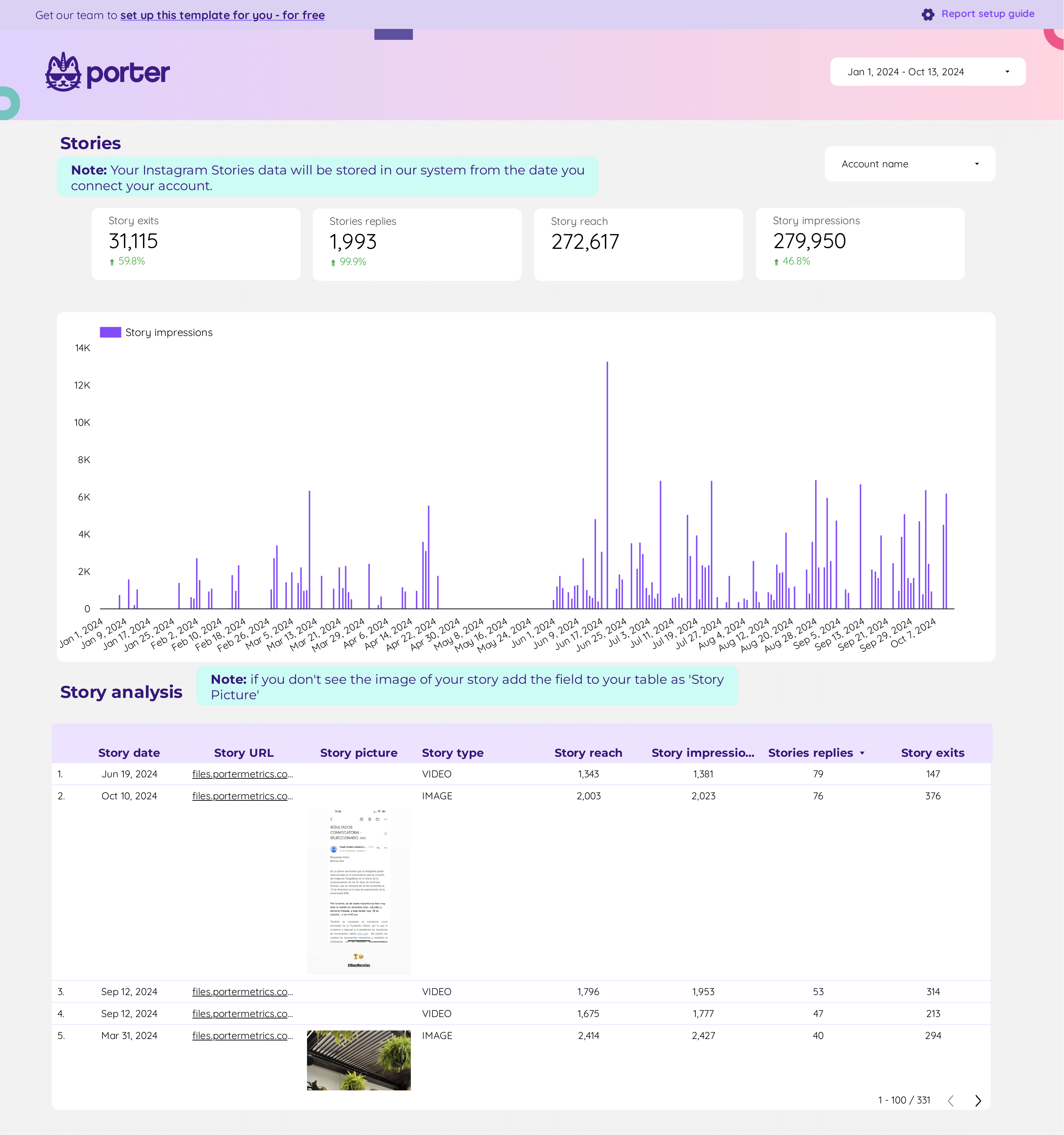
Social Media Post performance Dashboard template
Introducing the Social Media Post Performance Dashboard template, designed for seamless integration with platforms like Instagram Insights, Facebook Insights, LinkedIn Pages, TikTok, Google Business Profile, and Pinterest.
This dashboard provides a centralized view of your social media metrics, allowing you to track and analyze performance across multiple channels.
- Instagram Insights: Monitor engagement rates, follower growth, and content reach.
- Facebook Insights: Analyze post interactions, audience demographics, and page views.
- LinkedIn Pages: Evaluate post impressions, click-through rates, and follower analytics.
- TikTok: Track video views, likes, shares, and audience engagement.
- Google Business Profile: Review customer interactions, search visibility, and profile visits.
- Pinterest: Assess pin performance, audience insights, and traffic sources.
Utilize this dashboard to streamline your social media strategy and make informed decisions based on real-time data.

Social Media Engagement Dashboard template
The Social Media Engagement Dashboard template provides a centralized platform for tracking and analyzing performance across multiple social media channels. This tool is designed for marketers and social media managers who need to monitor and report on engagement metrics.
With this dashboard, users can access insights from:
- Instagram Insights – Analyze follower growth, post engagement, and story interactions.
- Facebook Insights – Track page likes, post reach, and audience demographics.
- LinkedIn Pages – Monitor visitor analytics, post performance, and follower trends.
- TikTok – Evaluate video views, follower activity, and engagement rates.
- Google Business Profile – Review customer interactions, search visibility, and review metrics.
- Pinterest – Assess pin performance, audience insights, and traffic sources.
This dashboard aggregates data to provide a holistic view of social media performance, allowing for data-driven decision-making and strategic planning.

Social Media Dashboard template
Introducing the Social Media Dashboard Template, designed for seamless integration with platforms like Instagram Insights, Facebook Insights, LinkedIn Pages, TikTok, Google Business Profile, and Pinterest.
This template provides a centralized hub for monitoring and analyzing your social media performance. It supports:
- Instagram Insights for tracking engagement metrics and audience demographics.
- Facebook Insights to evaluate post reach and interaction statistics.
- LinkedIn Pages for assessing follower growth and content engagement.
- TikTok analytics to understand video performance and audience trends.
- Google Business Profile for visibility and customer interaction data.
- Pinterest metrics to measure pin performance and audience reach.
Utilize this dashboard to streamline your social media strategy and make informed decisions based on real-time data.

LinkedIn Pages Dashboard template
The LinkedIn Pages Dashboard Template is designed for social media managers and marketing professionals to effectively manage and analyze LinkedIn Pages performance. This template provides a structured approach to monitor and report on various metrics.
Features include:
- Engagement Tracking: Monitor likes, comments, and shares to understand audience interaction.
- Follower Growth Analysis: Track changes in follower count over time to assess growth trends.
- Content Performance Metrics: Evaluate the reach and impact of posts to optimize content strategy.
- Demographic Insights: Analyze audience demographics to tailor content to specific segments.
This template is an essential tool for data-driven decision-making, providing a clear view of LinkedIn Pages activities and outcomes.

Community manager Dashboard template
The Community Manager Dashboard template is designed for social media professionals managing multiple platforms. This template provides a centralized view of Instagram Insights, Facebook Insights, LinkedIn Pages, Google Business Profile, Pinterest, and TikTok.
With this dashboard, users can:
- Track engagement metrics across all platforms.
- Analyze audience demographics and behavior.
- Monitor content performance and trends.
- Access real-time data for informed decision-making.
This tool is essential for maintaining a cohesive social media strategy and ensuring consistent brand messaging across various channels.
